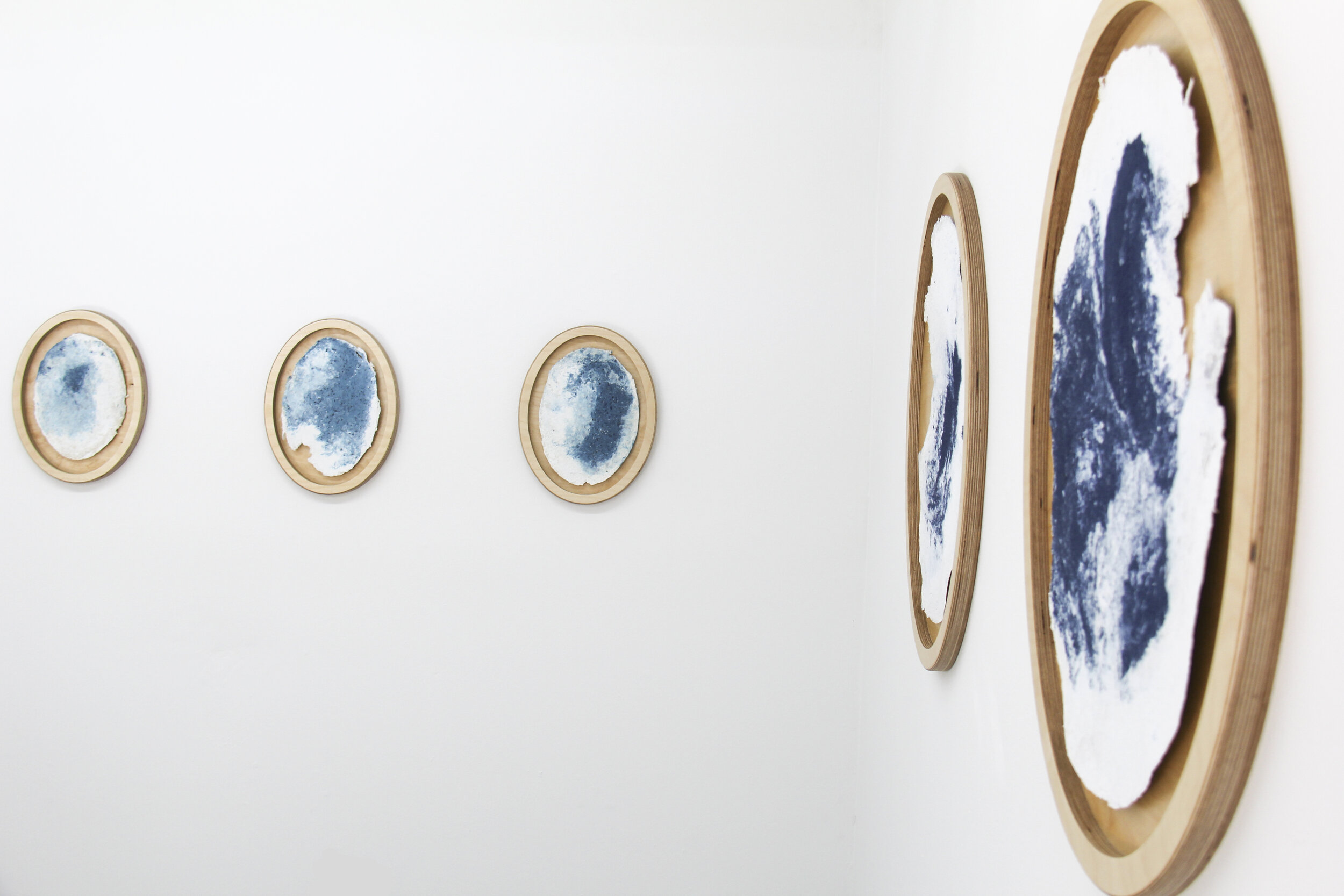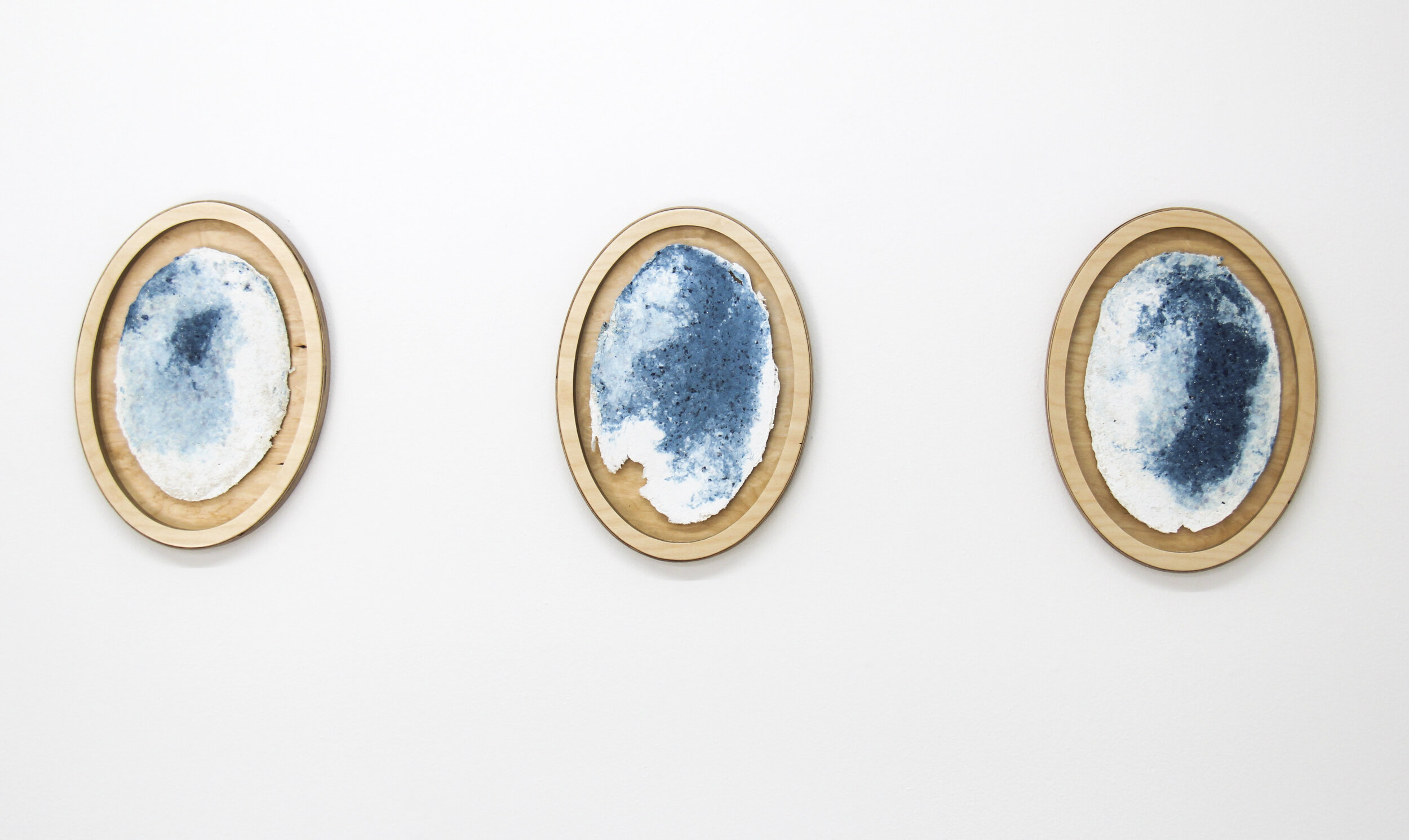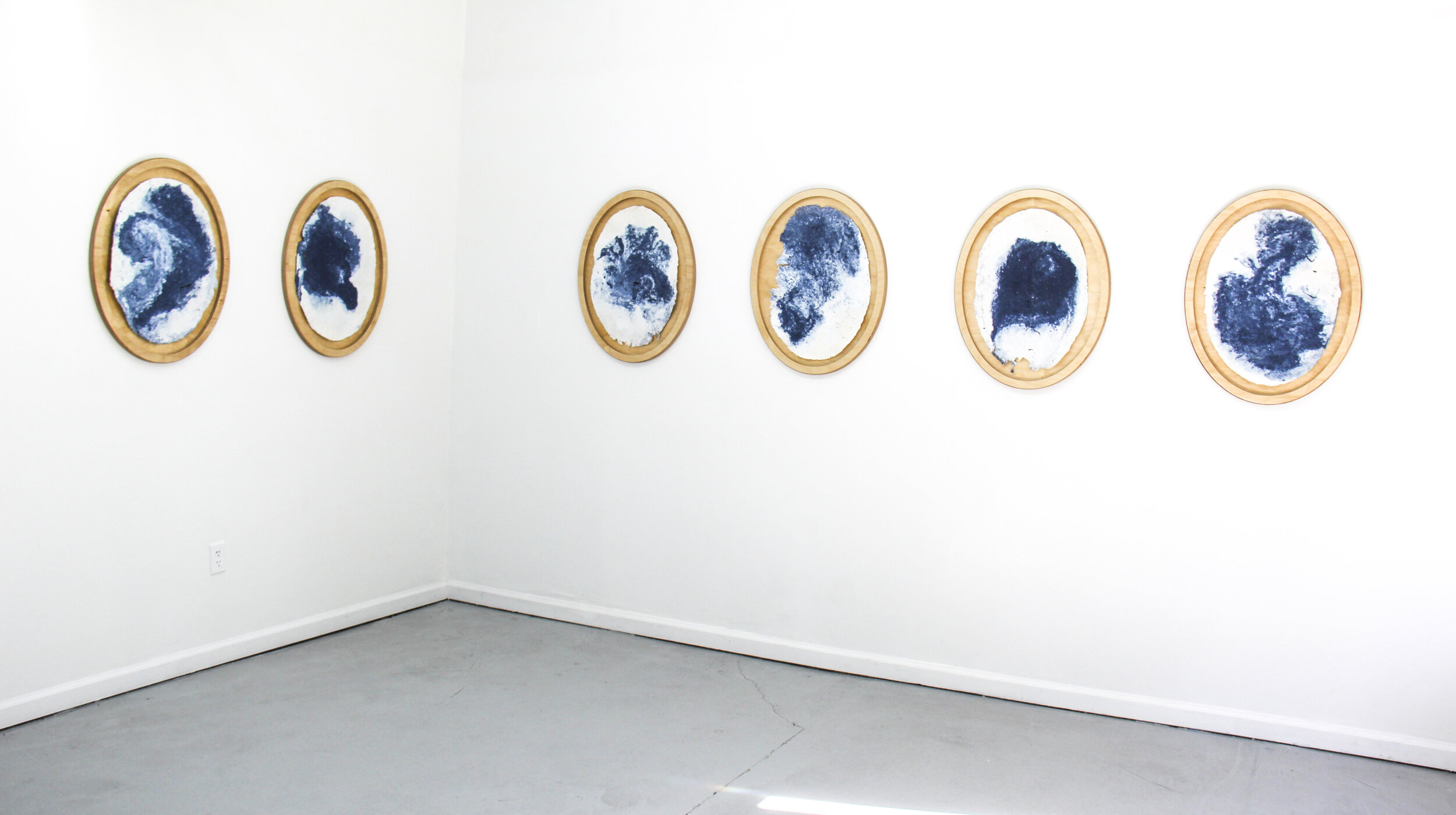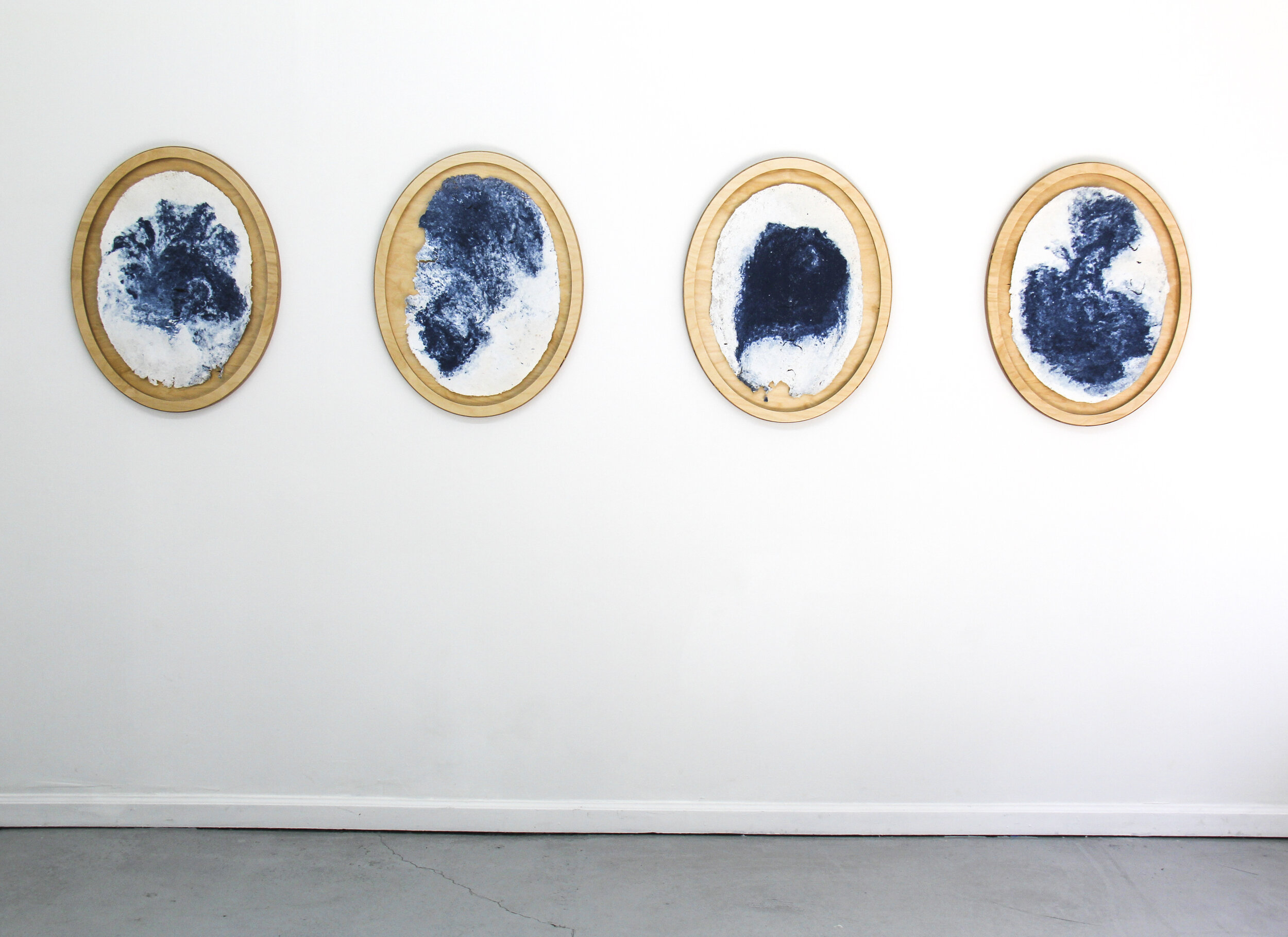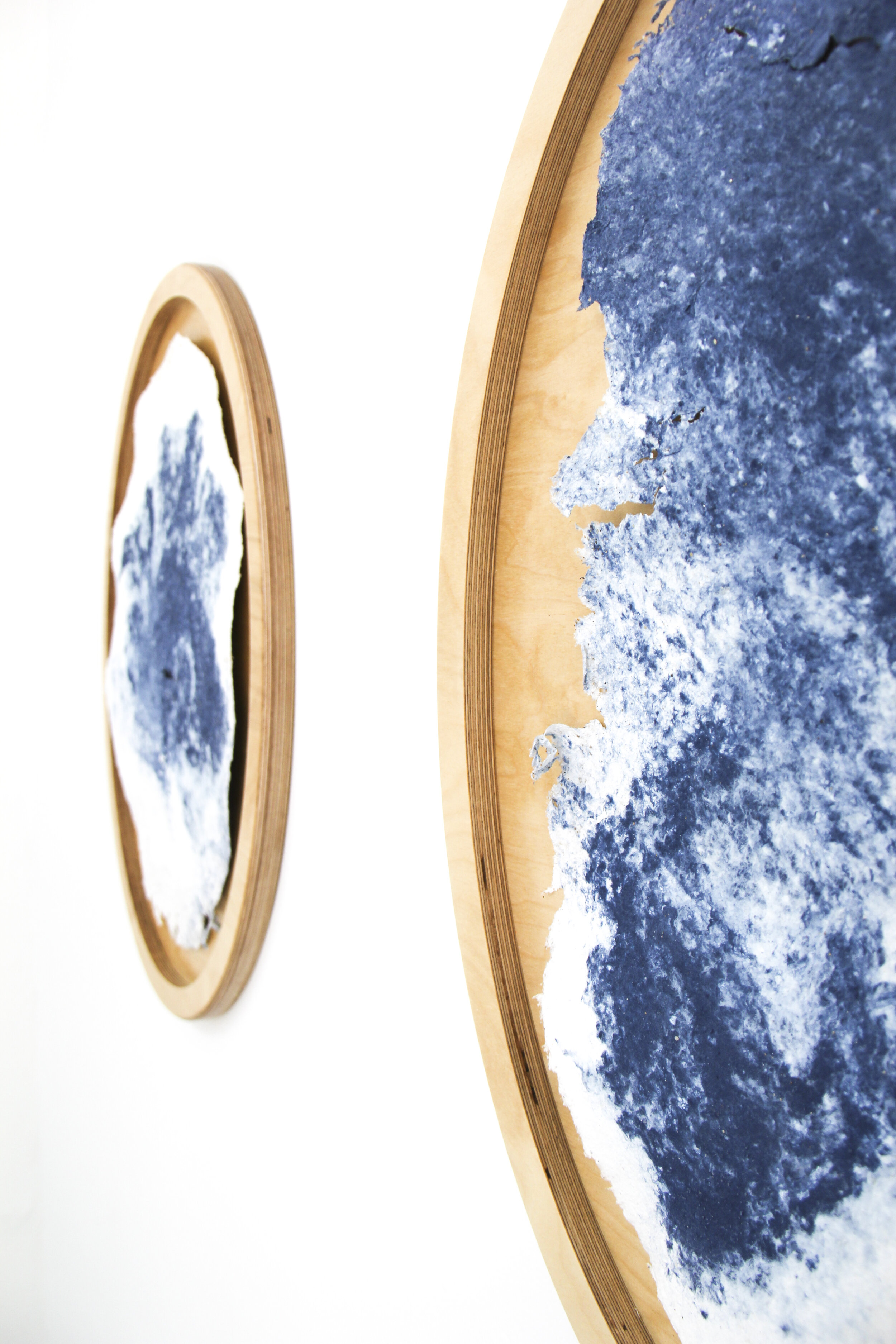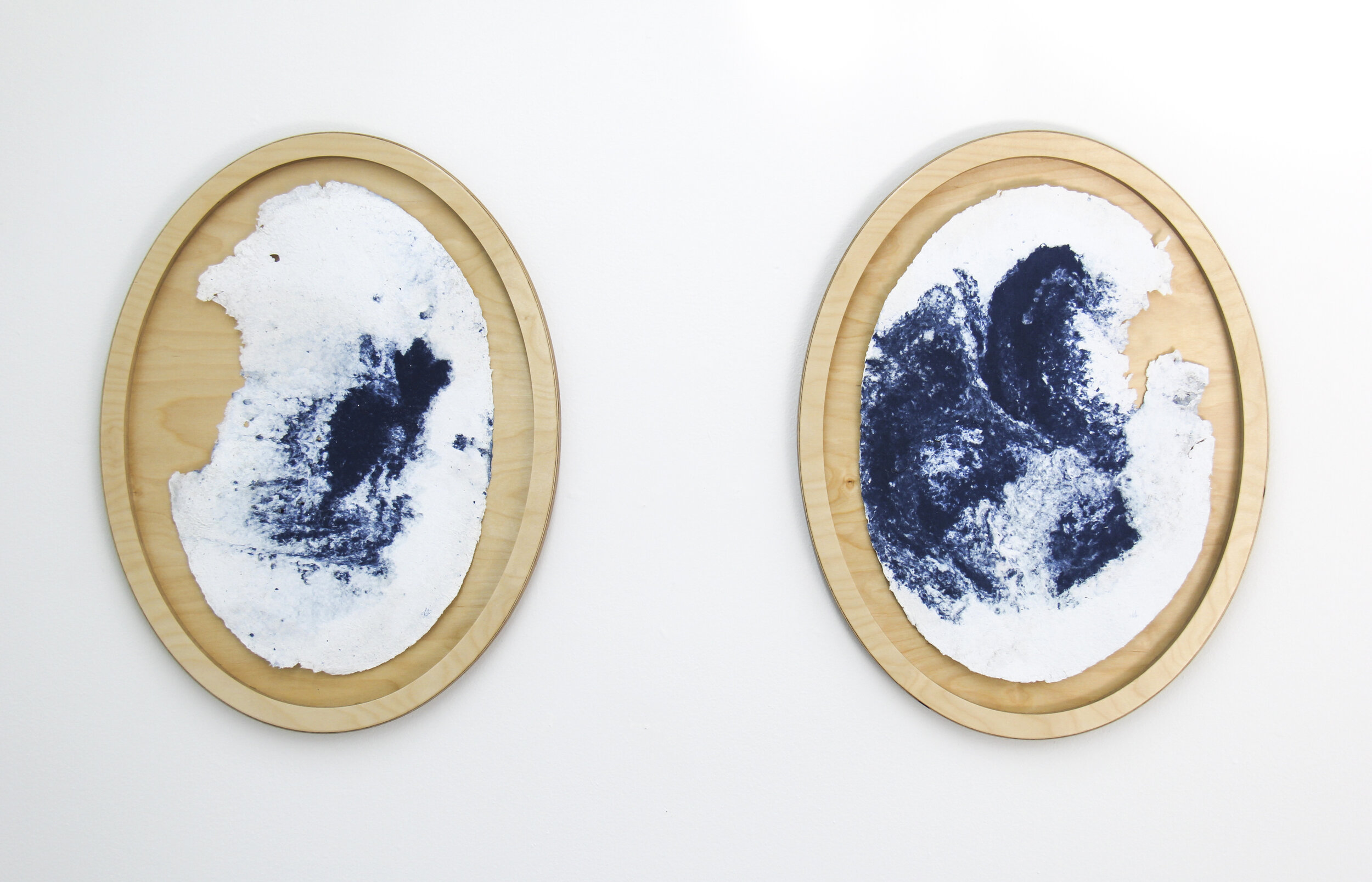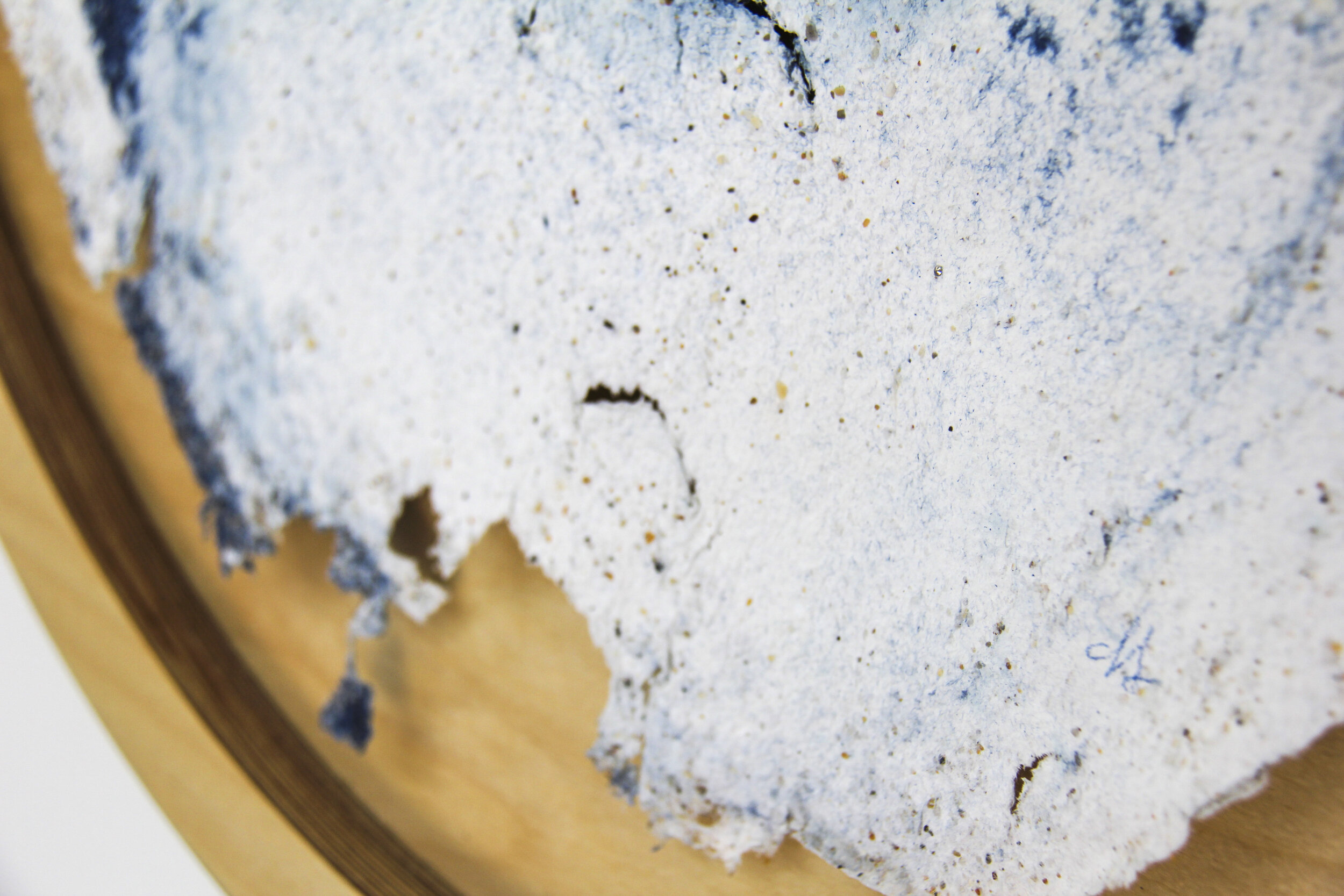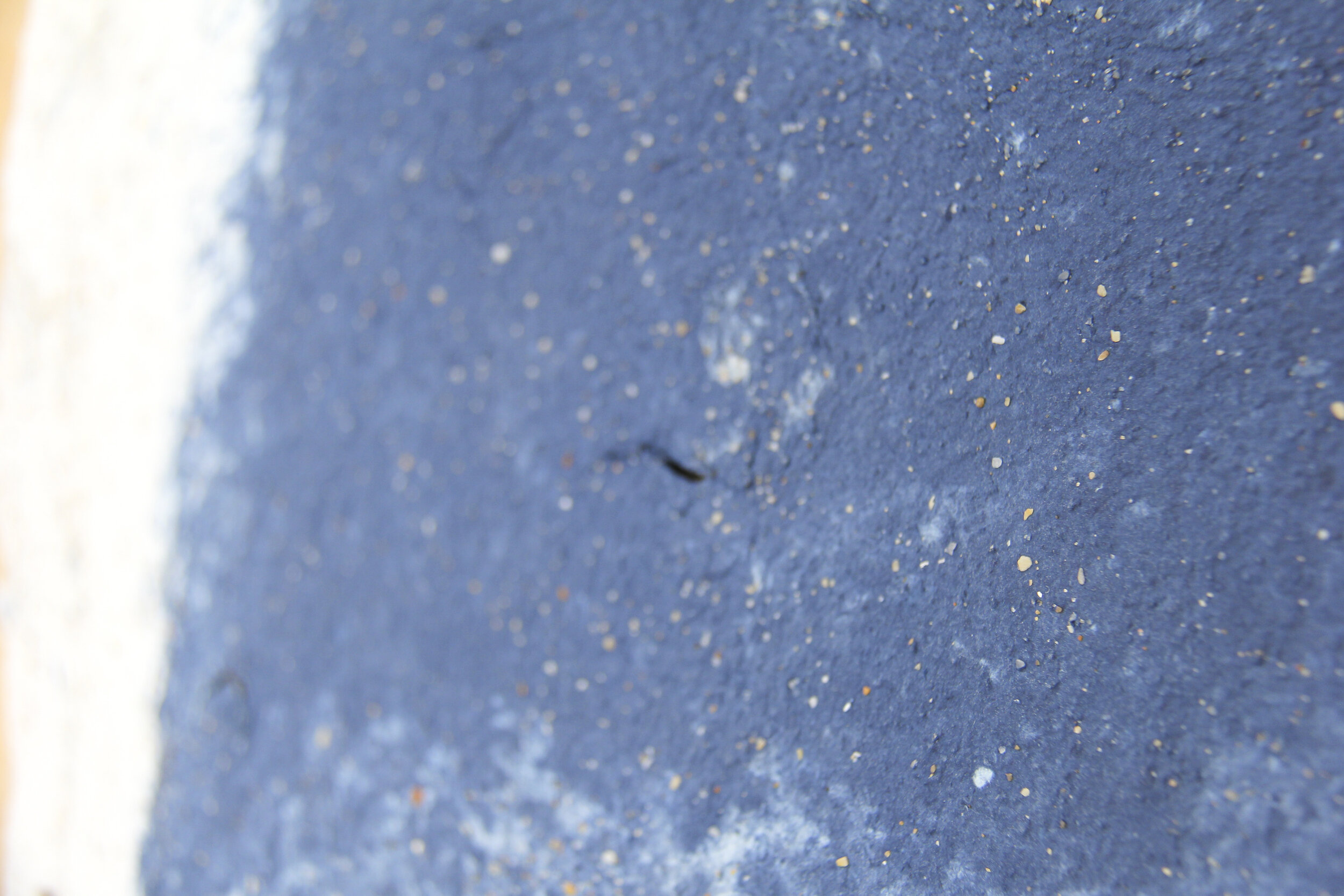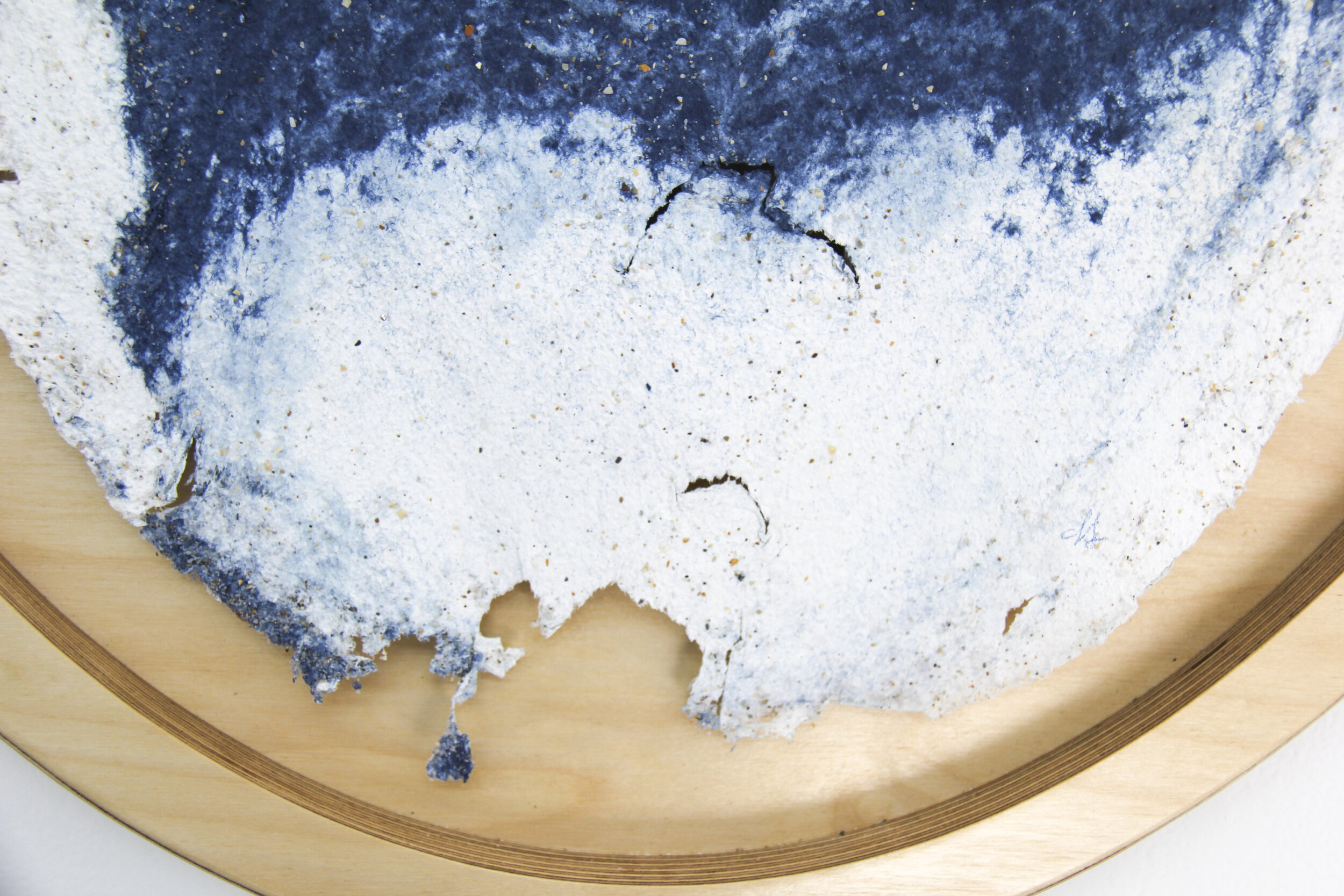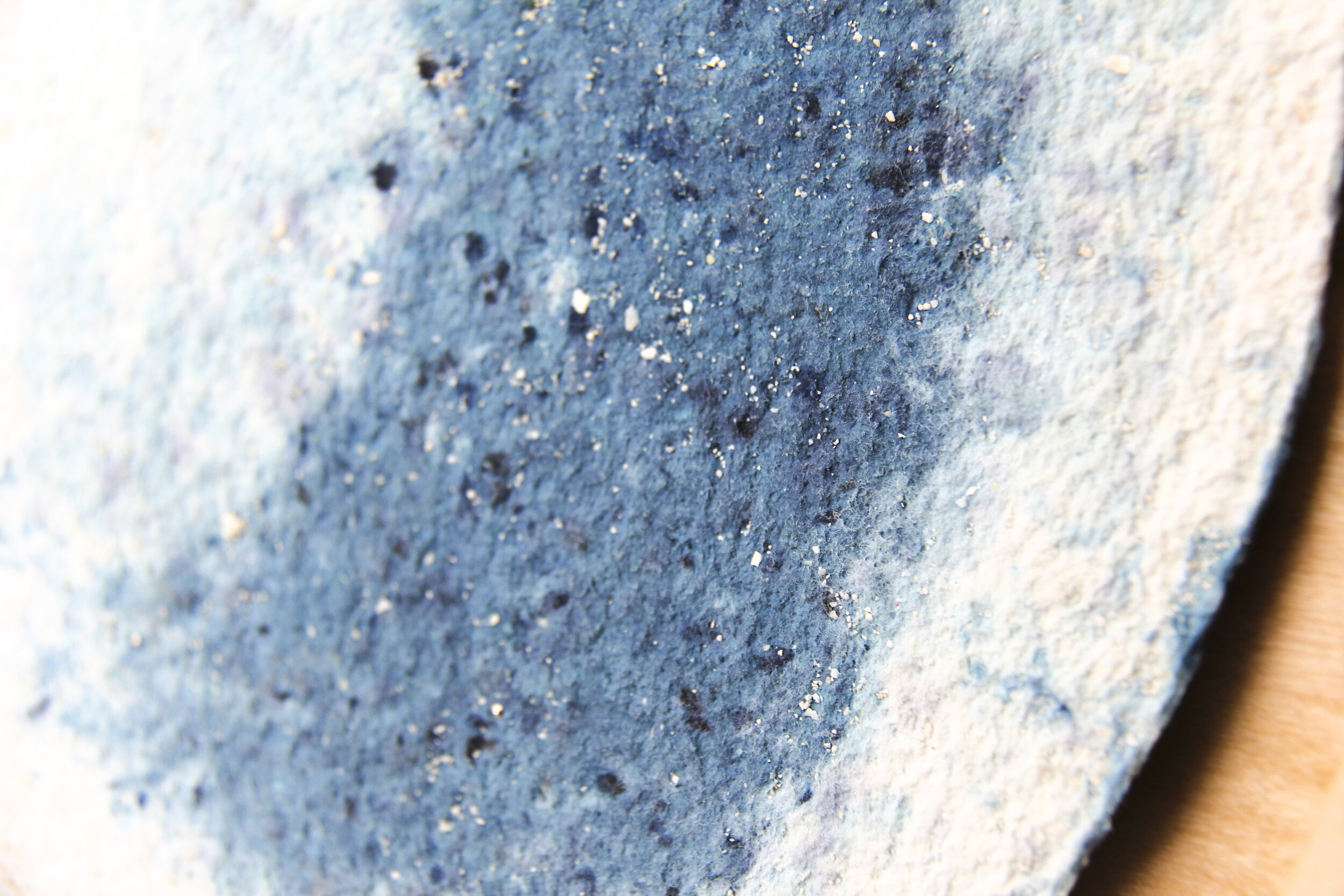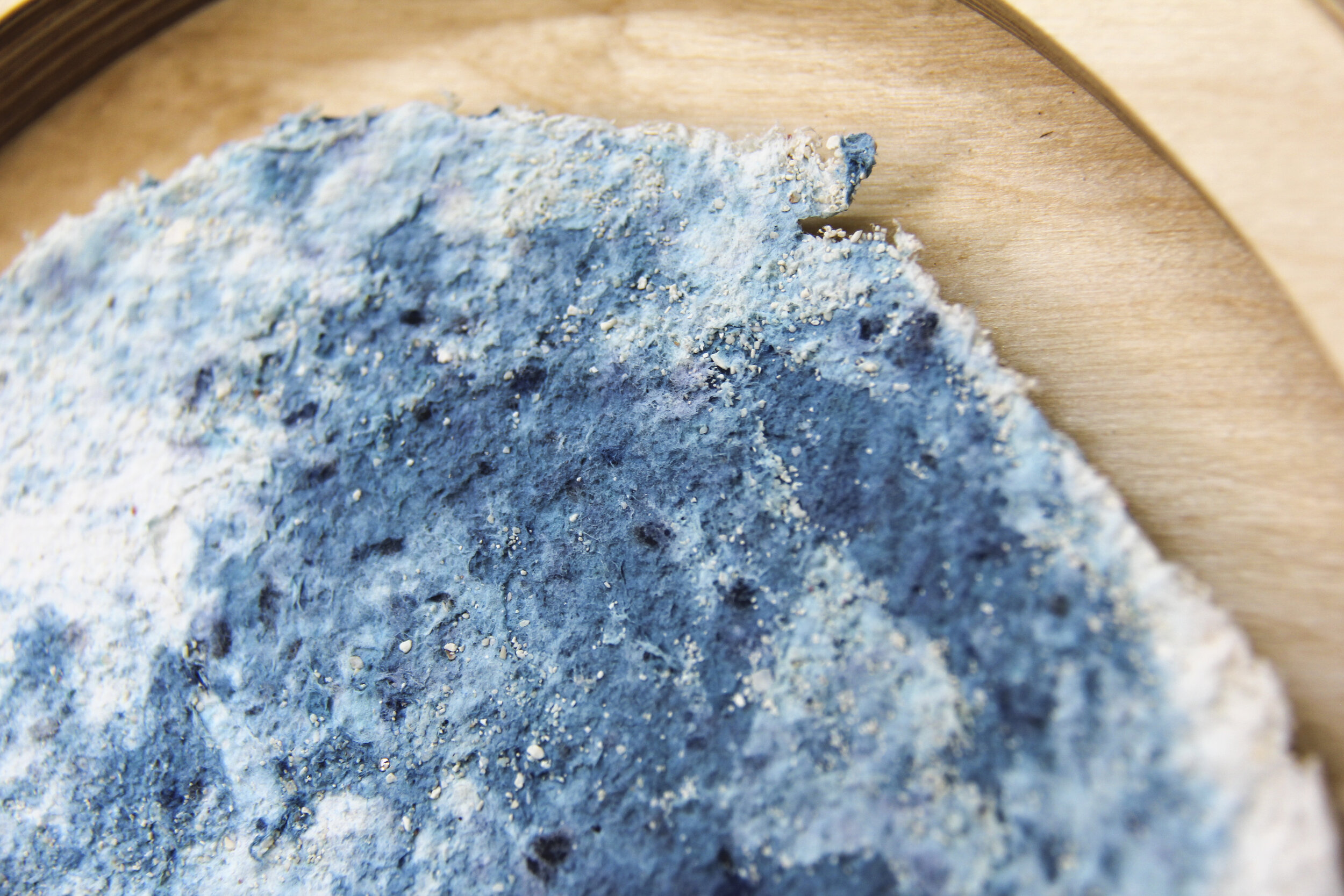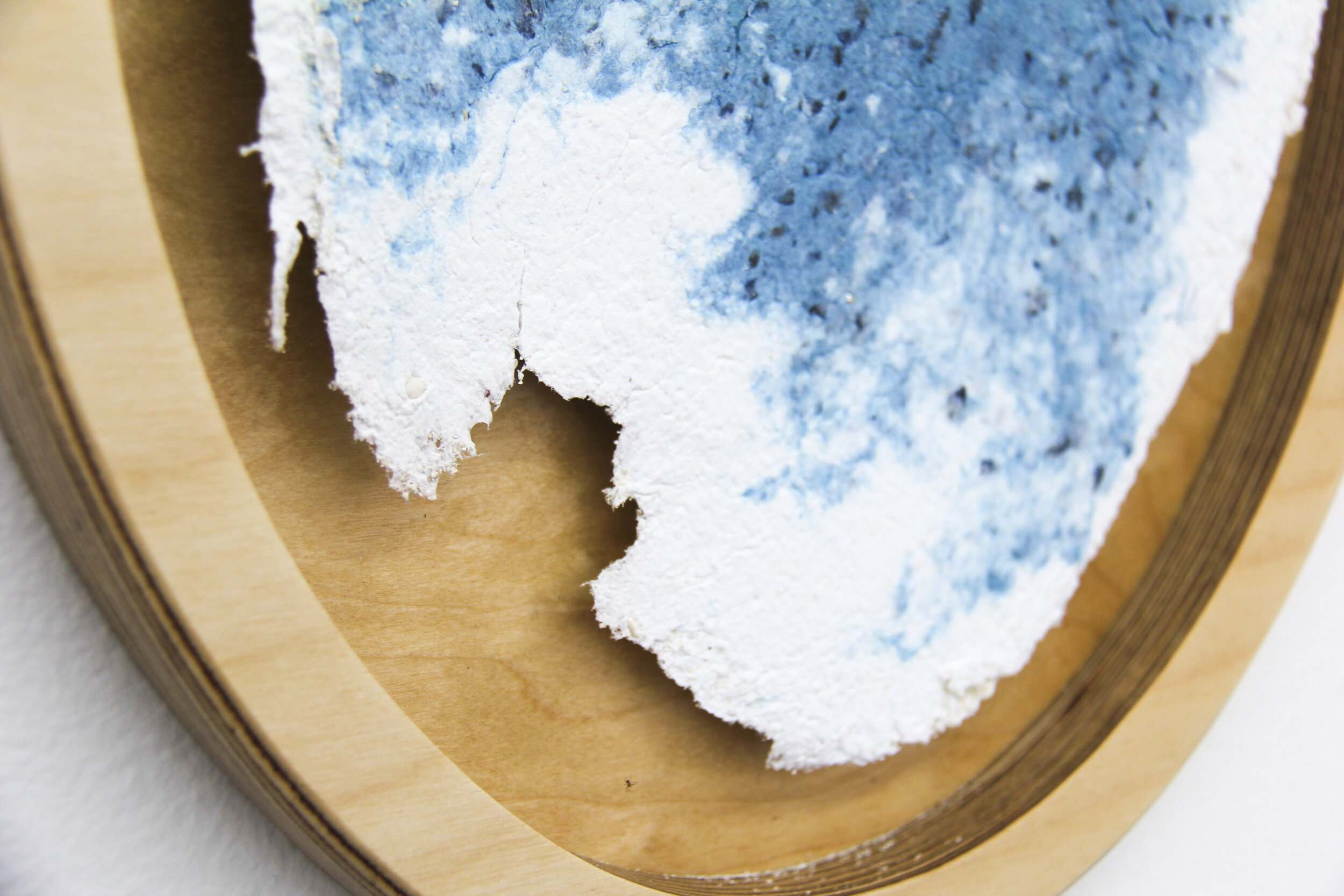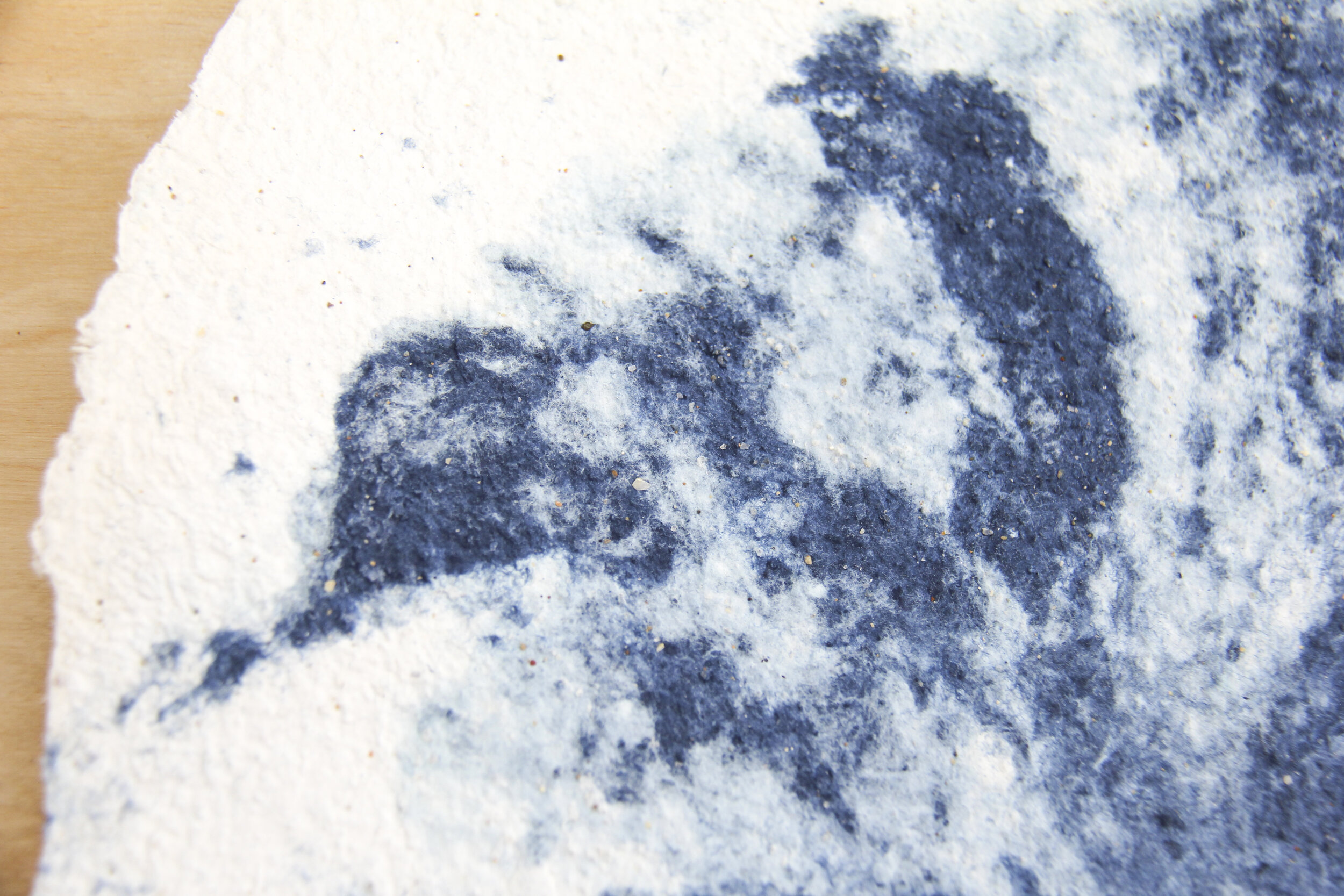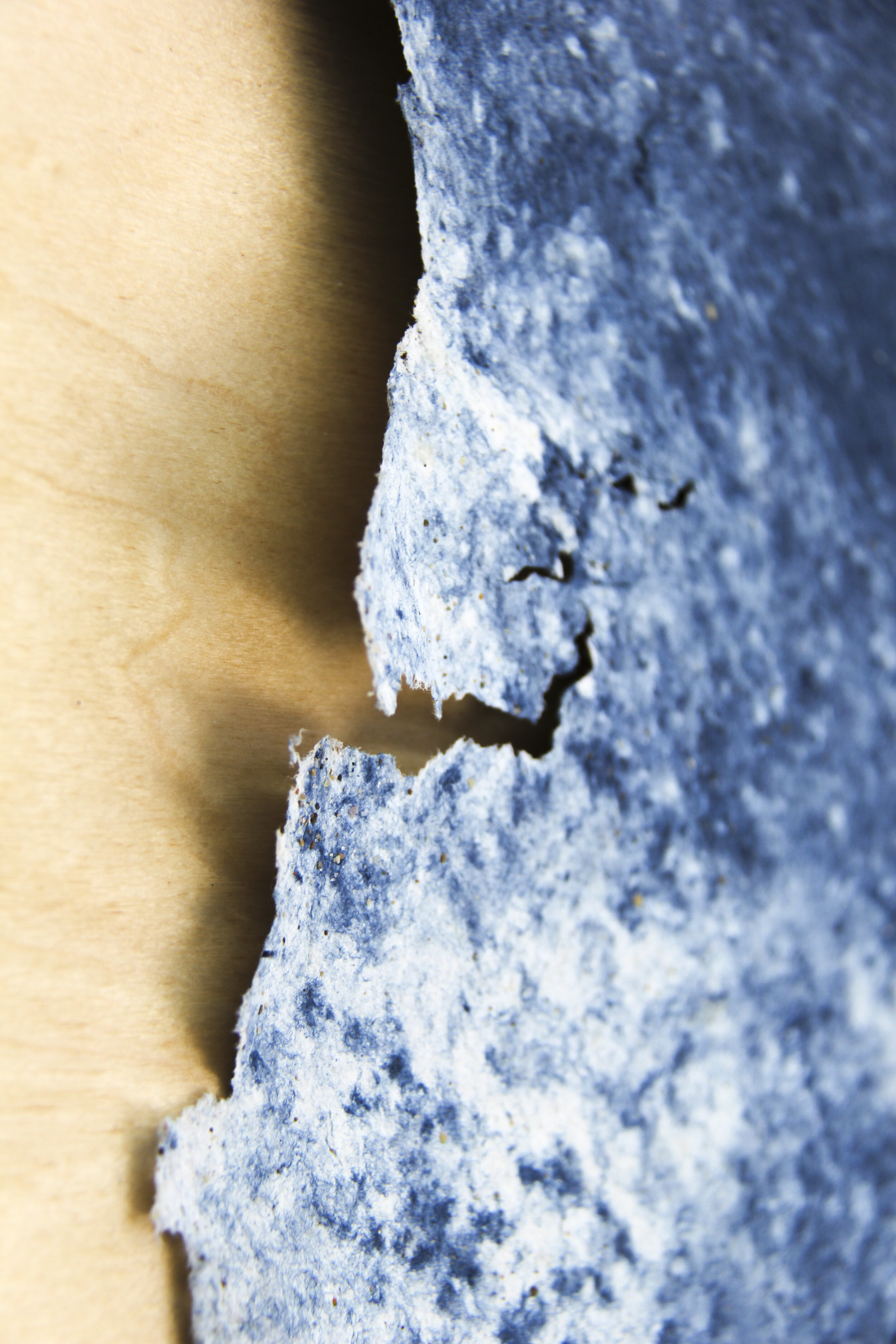A Closer Look: Water Draws Itself by Ingrid Schindall
If you are familiar with IS Projects, then it’s likely you already know its founder and owner, Ingrid Schindall. Ingrid started IS Projects, the public-access printmaking studio and attached fine art gallery in 2014 with a mission to cultivate a love and appreciation for print and book media in South Florida. Owning a print shop has heavily influenced her personal practice by focusing on both community-driven and personal projects over the last six years. In addition to fine art printmaking, she is devoted to her writing practice and has produced six limited edition books which were all written, designed, hand-printed, and bound herself. It is through this ‘Closer Look’ that we more intently investigate one of Ingrid’s personal papermaking projects through her solo exhibition, Water Draws Itself, on view —both virtually and in-person— in the IS Projects Gallery through early January 2021.
Water Draws Itself uses the process of papermaking to document the artist’s surroundings through a series of paper pieces made on the beaches of Fort Lauderdale, Naples, and Dry Tortugas, Florida. Within the gallery sits a line of the resulting twelve works in varying sizes and shades of blue and white pulp, mounted on oval wood frames. The paper itself is not enclosed behind glass but instead presented in its raw state, allowing the viewer to best witness the delicacy of the work and nuanced textures throughout.
At a glance, the twelve pieces are deceptively similar. It is through closer investigation and time spent in the space that a deeper relationship with each piece is felt — a slight irregularity along one edge or the build-up of sand along the bottom of a frame or the subtle composition shifts of the swirled pulp. It becomes clear that the pieces are not an edition in the traditional sense, but a series of portraits, unique to one another. Ingrid shares, “The pulp used in this project was the same for all of the pieces. The first pieces to be made, Naples 1 and 2, have the darkest blue as the pulp was fresh. When I made the Fort Lauderdale pieces a couple of weeks later, the blue had softened to a slightly lighter green tinted navy. The lighter aqua color is the result of the sustained chemical reaction between the navy blue pigment and the aging pulp. There is the most variety of color in the Dry Tortugas pieces because they were made last and the pulp had gone through a pretty significant transformation.”
NAPLES
FORT LAUDERDALE
DRY TOrtugas
This work emerged as Ingrid began to explore moving her art practice outdoors through papermaking on the beach. As printmakers, we are often tied to the presses or equipment required to produce an edition, so there is a certain freedom that comes with changing up our workspace. However, through this project, Ingrid was specifically interested in encouraging her environment as a collaborator, “in the search to find ways to let water draw itself”.
In Ingrid’s artist talk during the opening reception of this show, she began with a quote from Carl Safina’s book, Song for the Blue Ocean. She states that the following quote has driven her practice and her investigation of water for the past seven years:
“It has been said —tongue and cheek— that animals were invented by water as a device for transporting itself around from one place to another. That’s an interesting perspective, especially considering that when animals left the seas in which life arose, they took seawater with them, in their bodies — an internal environment crucial for cellular survival. We are, in a sense, soft vessels of seawater. Seventy percent of our bodies is water, the same percentage that covers the Earth’s surface. We are wrapped around an ocean within. You can test this simply enough: Taste your tears.”
The concept of water drawing its own portrait is not that abstract when we consider that rivers have a natural tendency to wear away rock layers, forming canyons and rock formations over centuries. Papermaking becomes the perfect, and more controlled entry point for Ingrid to begin to harness water as a drawing tool. Ingrid describes the papermaking process, “Different colored paper pulps were prepared for a trip to the beach. Mixed with ocean water, placed into a mold then released onto the damp sand, the swirling slurry settled quickly as the water escaped below the ground and the pulp remained on the sand. The resulting pieces of paper that formed, delicate to the touch and alien in the landscape, document the history of the water’s path.” To better illuminate this method, Ingrid and videographer, Johnny Zhang, document the experience in the video below.
As viewers navigate the exhibition, they’re invited to explore the shorelines for themselves. Each work is titled with the beach it was made on, so that differences in each location can be easily identified. For example, not only does the color shift in pulp disclose an element of time to the project; revealing which beaches were visited earlier and later in the series, but the surface of the paper also illuminates each location’s idiosyncrasies.
detail view of coarse sand embedded in dry tortugas paper
“By collaborating with different beaches I discovered that the qualities of the sand have a strong effect on the resulting paper. Course sand gets tangled in the paper fiber and becomes a very visible part of the piece while fine sand packs better so the paper fibers are not able to penetrate under the surface and encapsulate the sand particles as easily.”
Much like printmaking, the act of making paper is married to its process, but with the addition of performance. “One of the interesting aspects of making art out in the world is that the act of making becomes a public performance for those onlookers who happen to stumble upon it. The artist’s process then becomes a disruption in the day, a reminder that creation (artistic and otherwise) is happening whether we are watching it or not.”
The pieces, presented on oval edged frames, echo portraits and mirrors to be peered into. “Each sheet reflects the surface of the water covering the planet in miniature. Sitting on the sand, wrestling with plastic sheeting and buckets of pulp, I’m reminded that there are easier ways to produce a portrait of the surface of the ocean but this paper holds not only the image of the ocean but also the smell, salt, and sand that are inseparable from the identity of this shoreline. Each piece is a portrait of this strip of beach. The irregularities are a reminder that you never see the same wave twice.”
As this exhibition comes to a close over the next couple of weeks, please reach out to schedule a viewing. We will leave the gallery lights on 24 hours so that our local audience can safely access the exhibition through our large storefront windows. We also invite you to view the works more closely through our Virtual Gallery Tour.
For pricing and additional information on the works in the show, please visit our Gallery Shop and feel free to reach out via email with any inquiries at sammi@isprojectsfl.com
For more information on Ingrid Schindall and her work, visit www.ingridschindall.com
Sincerely,
Sammi McLean
www.isprojectsfl.com


